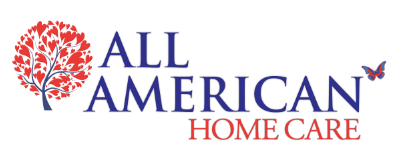Navigating Stroke Recovery: A Comprehensive Guide
The Path to Stroke Recovery
A stroke occurs when blood flow to the brain is interrupted. This can cause significant damage. It affects various bodily functions. For stroke patients, the immediate aftermath is critical.
However, the period of stroke recovery is equally important. This journey can be long. It requires patience. It needs dedication. The goal is to regain lost abilities. It is to adapt to new challenges.
This guide explores the multifaceted process of recovering from a stroke. It highlights vital steps and crucial support systems.
Table of Contents
Understanding What Happens When a Stroke Occurs
A stroke is a serious medical event. It happens quickly. It can lead to lasting disability.
- Ischemic Stroke: This is the most common type. It happens when a blood clot blocks an artery. This clot prevents blood flow to an area of the brain.
- Hemorrhagic Stroke: This occurs when a blood vessel bursts in the brain. Blood leaks into brain tissue.
- Transient Ischemic Attack (TIA): Sometimes called a “mini-stroke.” It’s a temporary blockage. Symptoms are brief. A transient ischemic attack (TIA) is a warning sign. It indicates a higher risk of a full stroke.
When a stroke deprives the brain affected area of oxygen, brain cells die. The specific symptoms depend on the area of the brain that is damaged. This can affect movement. It can impact speech. It influences cognitive function.
The Critical Role of Early Stroke Rehabilitation
Rehabilitation should begin as soon as possible. Often, it starts within 24 to 48 hours of a stroke. This early intervention is vital. It helps the brain “rewire” itself. This process is called neuroplasticity.
Inpatient Rehabilitation
Many stroke survivors begin their journey in inpatient rehabilitation. This happens after acute hospital care.
- Patients live at the facility. They receive intensive therapy.
- They participate in several hours of therapy sessions daily.
- A dedicated care team provides comprehensive support. This includes doctors, nurses, and therapists.
- The focus is on regaining basic mobility. It aims to improve self-care skills.
Outpatient and Home-Based Rehabilitation
Once stable, patients may transition home. Rehabilitation continues.
- Outpatient therapy: Patients travel to a clinic for therapy sessions.
- Home-based therapy: Therapists visit the patient’s home. This is often more comfortable. It is also more practical for stroke patients with mobility issues.
- Dementia home care services often include elements of home-based rehabilitation. This ensures consistent support.
Key Components of a Stroke Rehabilitation Plan
A comprehensive stroke rehabilitation plan is tailored. It addresses the unique needs of each individual. A specialized care team creates this plan.
Physical Therapy
Physical therapists help regain movement. They improve strength. They enhance balance.
- Exercises focus on affected limbs. They target walking ability.
- Techniques include stretching. They use strengthening exercises. Balance training is essential.
- The goal is to improve gross motor skills. This helps with everyday mobility.
Occupational Therapy
Occupational therapists help with daily activities. These are the tasks needed for independent living.
- They assist with dressing. They help with bathing. Eating and cooking skills are addressed.
- They teach adaptive strategies. They suggest assistive devices.
- The aim is to help stroke survivors perform meaningful activities. They learn to manage household tasks.
Speech Therapies
Speech-language pathologists address communication issues. They help with swallowing problems.
- Exercises improve speech clarity. They enhance language comprehension.
- Techniques help with word finding. They improve sentence construction.
- Swallowing difficulties (dysphagia) are common. Speech therapies help patients swallow safely. This prevents choking. It ensures proper nutrition.
Cognitive Rehabilitation
Cognitive deficits are common. These affect thinking and memory.
- Therapists help with attention. They improve problem-solving skills.
- Memory exercises are used. Organizational strategies are taught.
- The goal is to enhance mental function. This improves overall independence.
What to Expect in Long-Term Recovery
Recovering from a stroke is a long-term process. Progress can continue for many months after a stroke.
- The most rapid gains usually occur in the first few months after a stroke.
- However, improvements can still happen years later. The brain continues to adapt.
- Some individuals may experience residual effects. They might have weakness. They could have speech difficulties.
- Adaptation is key. Learning new ways to perform daily activities is important.
- Support from family members is crucial during this long-term journey.
The Importance of a Coordinated Care Team
Successful stroke recovery relies on collaboration. A multidisciplinary care team works together.
- This team may include neurologists. Rehabilitation physicians are involved.
- Physical therapists, occupational therapists, and speech-language pathologists contribute.
- Nurses, social workers, and psychologists also play roles.
- The primary care doctor oversees overall health. They manage medications. They monitor for complications.
- Effective communication among the team members is vital. It ensures a cohesive rehabilitation plan.
Preventing Another Stroke
Prevention is a critical part of stroke recovery. Stroke survivors are at higher risk for another stroke.
- Blood pressure management is key. High blood pressure is a major risk factor.
- Managing diabetes is essential. Controlling cholesterol levels is important.
- Quitting smoking dramatically reduces risk.
- Maintaining a healthy diet helps. Regular physical activity is beneficial.
- Medications like anti-clotting drugs may be prescribed. This prevents another blood clot.
- Your primary care physician will guide these preventative measures.
How All American Home Care Supports Stroke Survivors
All American Home Care understands the unique needs of stroke patients. We provide tailored dementia home care services. These are specifically adapted for stroke rehabilitation.
- Personalized Care: We develop a customized rehabilitation plan. It aligns with therapy goals.
- Skilled Assistance: Our caregivers help with daily activities. They ensure safety. They provide compassionate personal care.
- Therapy Reinforcement: Caregivers can reinforce exercises. They practice strategies taught in therapy sessions.
- Medication Management: We assist with medication reminders. This helps prevent missed doses.
- Safe Environment: We help create a safe home. We identify and mitigate fall risks.
- Emotional Support: We offer companionship. We provide reassurance. This is vital for long-term well-being.
- Our team works closely with your existing care team. This includes your primary care doctor. This ensures seamless support. We help you ensure your loved one receives continuous, expert care.
Hope and Progress in Stroke Recovery
The journey of stroke recovery is profound. It demands resilience. It requires comprehensive support. Every step forward is a victory. From the immediate aftermath when a stroke occurs to long-term adaptation, progress is possible.
With a dedicated rehabilitation plan, consistent therapy sessions, and a supportive care team, stroke survivors can regain much.
All American Home Care is here to partner with you. We provide expert home care for stroke patients. We help you navigate this path. We support continued progress and enhanced quality of life.
Related Articles:




